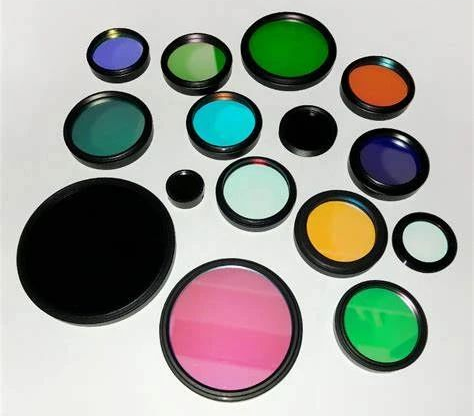The Role of Optical Filters in Machine Vision Systems
Optical filters are a key component of machine vision applications. They are used to maximize contrast, improve color, enhance the recognition of the the measured objects and control the light reflected from the the measured objects.
Filters in the vision system can increase the contrast of the object under test, thereby improving the system’s ability to distinguish desired features. Higher contrast can improve detection accuracy and speed. By using optical filters, the presence of ambient light or its potential change over time can be minimized, thereby allowing for long-term stable operation of the vision system.
Typical Application
▼ Color Selection
▼ Color Suppression
▼ Ambient Light Suppression
▼ For Infrared Light Sources
▼ For Ultraviolet Light Sources
▼ Polarization of Light
▼ Reduce Interference from other Color Light Sources
01 Bandpass Filters for Infrared LED Illuminators
This is used in all NIR applications to block visible wavelengths. Bandpass filters are typically used for wavelengths of 808nm, 850nm, 880nm, 905nm, 940nm, and 1065nm. Typical applications are to remove or suppress the adverse effects of ambient light, or to analyze specific features of objects highlighted by infrared illumination.
Conventional illumination without filter compared to infrared illumination with 880nm filter
Comparison of ambient light influence and ambient light suppression of infrared 880nm filter
02 Bandpass Filter for Red LED Illuminators
Suitable for all applications where red illuminators are present or specific color characteristics of white illuminated objects need to be selected. Typically bandpass filters with a wavelength range of 625 nm to 635 nm are used. Typical applications include removing or reducing the adverse effects of ambient light or analyzing specific features of objects highlighted by red lighting.
Comparison between conventional illumination without filter and red illumination with 635nm filter
03 Bandpass Filter for Green LED Illuminators
This applies to all applications that involve the use of green lighting or require the selection of specific color characteristics of objects under white lighting. Typically, a bandpass filter with a wavelength of about 525nm is used. Typical applications include removing or reducing the adverse effects of ambient light, or analyzing specific features of objects highlighted by green lighting.
Use of 525nm filters can be used to select specific object colors or to increase image contrast
04 Bandpass Filter for Blue LED Illuminators
This applies to all applications involving blue light or where specific color characteristics of objects need to be selected under white light. Typically a bandpass filter with a wavelength around 470nm is used. Typical applications include removing or reducing the adverse effects of ambient light or analyzing specific features of objects highlighted by blue lighting.
Use a 470nm filter to increase the contrast of written text and printed codes
05 Bandpass Filter for UV LED Illuminators
Suitable for all applications where UV lighting is provided. Typically a wavelength around 365nm is used. Typical applications include removing or reducing the adverse effects of ambient light, or analyzing specific features of objects highlighted by lighting (fluorescent effects).
Conventional illumination using UV illumination with a 365 nm filter can be used to identify materials affected by fluorescence
06 Bandpass Filters for Visible LED Illuminators
Typical applications are to eliminate or reduce adverse effects caused by reflective or shiny objects. The use of polarizing filters eliminates the reflection effect of the protective film.
Suzhou Jiujon Optics has continuously introduced advanced equipment and technological innovation. We can provide customized services for optical filters of various specifications and parameters. Welcome your inquiry!
Post time: Aug-29-2023











